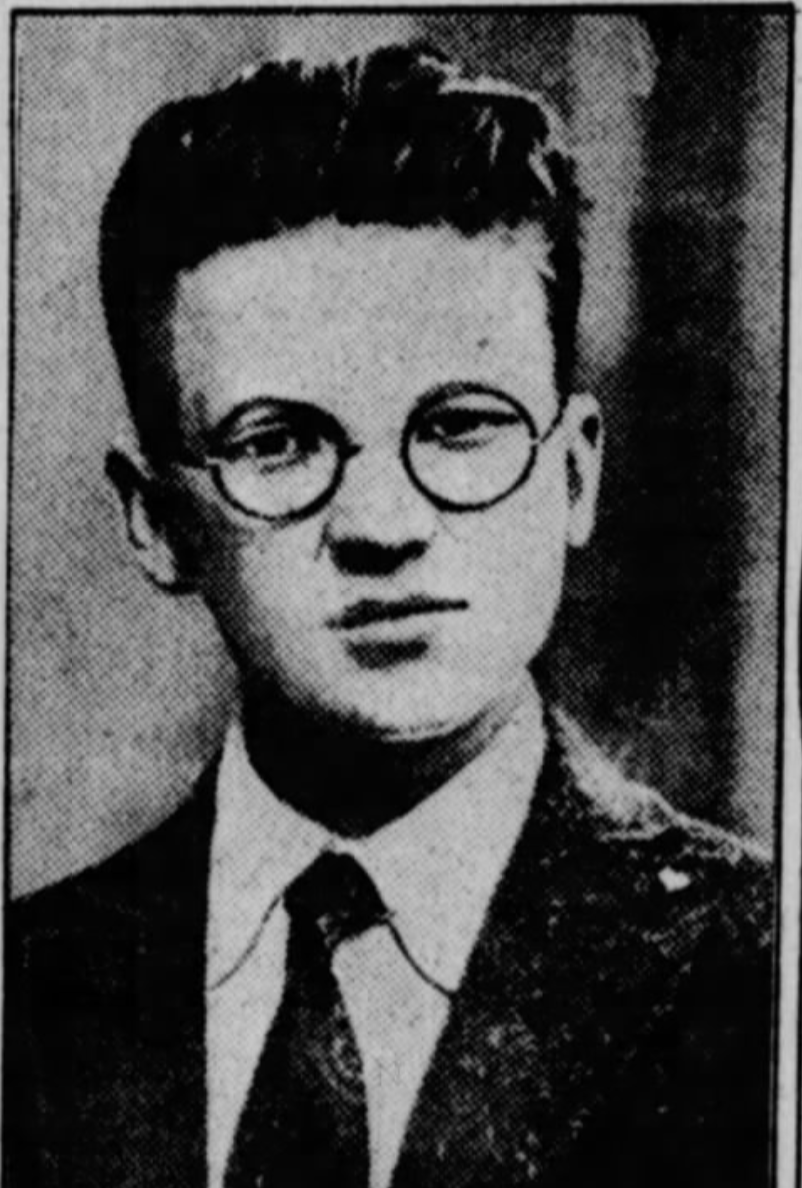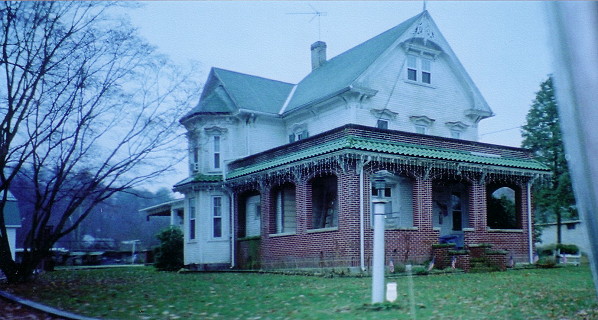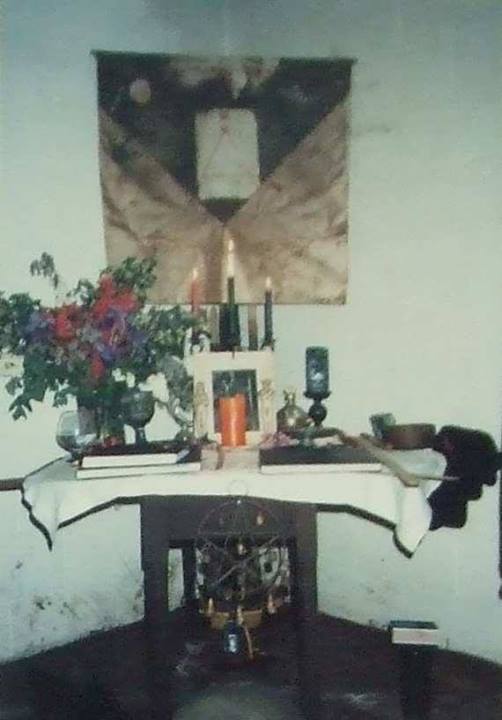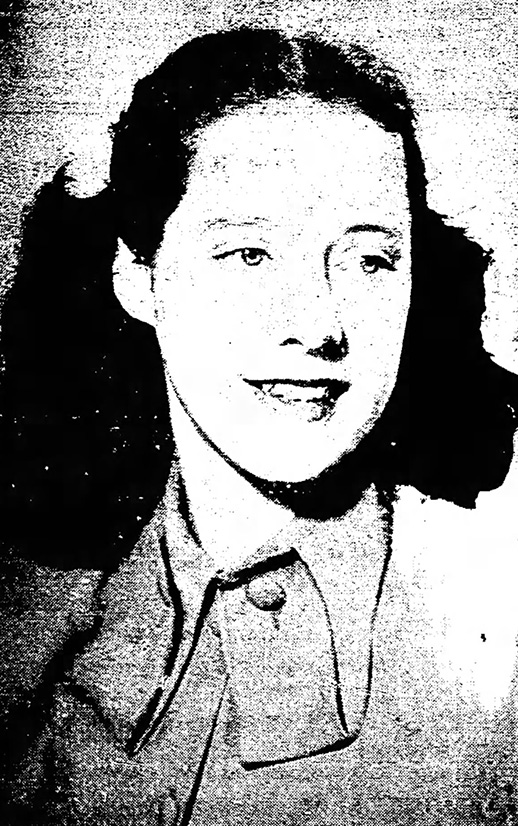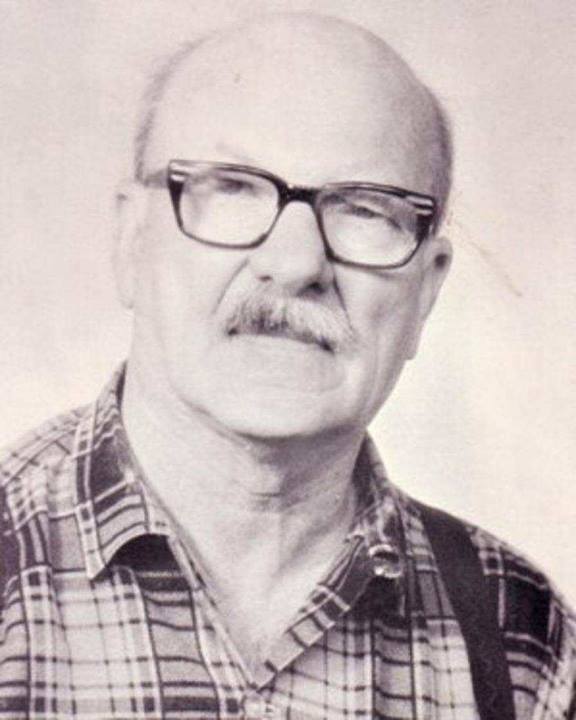Frederick Santee
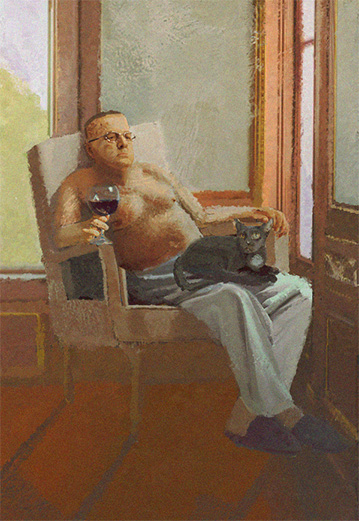
Frederick LaMotte Santee, FAAR (17 September 1906 - 11 April 1980) was a medical doctor, occultist, and practicing warlock in rural Pennsylvania. He was the founder and leader of the Coven of the Catta, a coven that practices Gardnerian Wicca.
Early life
Santee was born on 17 September 1906 in the rural Pennsylvania town of Wapwallopen, the only child of Dr. Charles LaMotte Santee and his wife Verna Caroline Lloyd Santee. He was the grandson of Dr. Ephraim A. Santee. His father, grandfather, and great-grandfather were all practicing physicians.
Frederick was able to read English and German at age three. He learned German from his father, mother, and an uncle by marriage. At the age of eight, wrote a translation of Caesar's Gallic War from the original Latin, which had had taught himself by studying his grandfather's old Latin books. He started school in fourth grade at age five and graduated from Central High School in Philadelphia (a college-level high school which granted a B.A.) at age 13.
As a youth, he excelled at baseball, with a classmate claiming he was a "budding 'Babe' Ruth, whose heavy hitting had won more than one game for his team." Santee later said he tried very hard to be good at sports in the hopes of attracting girls.
Education
In 1920, Santee became the youngest person accepted to Harvard University, at age 13. Newspapers around the country carried reports of his remarkable achievement. The Scranton Times stated:
Frederick Santee, 13, Wapwallopen, son of Dr. and Mrs. Santee has matriculated for the regular course in Harvard University. He is the youngest ever to enter as a candidate for degree. The boy has been unusual since his first day in school…
He returned to Wapwallopen during his summer breaks to work on a local farm, but kept his own apartment in Boston, which was paid for by his parents. He won the Bowdoin prize for his Greek translations and graduated magna cum laude in 1924 at the age of 17 with a Bachelor of Arts degree.
Post-graduate studies
After leaving Harvard, Santee was invited to study Classics at Wadham College of Oxford University with a full scholarship. He completed the full course of study and earned a second BA in 1926 (later upgraded by Oxford to an MA).
In 1927, he was granted a fellowship at the American Academy of Rome. While in Rome, he traveled extensively in conjunction with his studies. Throughout 1927, Santee visited Egypt, Palestine, Greece, Austria, Germany, France, Belgium, Switzerland. During this period, his mother Verna accompanied him at all times.
Immediately after receiving his BA, Santee was invited into Masters program at Oxford, but he declined, preferring instead to travel across Europe and then return to the United States to accept a teaching position at Lehigh University in Bethlehem, Pennsylvania. However, despite his decision not to enroll, Oxford University awarded him a Master of Arts degree anyhow in 1930 (some sources say 1929). This is due to Oxford's peculiar practice of awarding the "rank" of Master of Arts to students who have completed their BA and retained some academic association with the university afterward. Thus, his MA was on-par with an honorary degree and would have been annotated as "M.A. (Oxon.)."
After losing his teaching position during the Great Depression, Santee enrolled in the medical program at Johns Hopkins University, earning his MD in 1938.
Professor at Kenyon College
In April 1938, Santee was hired as a Latin professor at Kenyon College in Ohio. He was highly regarded by his colleagues, who considered him the greatest living Latin author and on par with classical Roman authors. He published numerous poems in Latin in the HIKA literary magazine. In 1941, the students at the college performed his play, The Woman From Detroit, which was an adaptation of Meander's The Andrian Woman.
Although he became popular with Kenyon students and ended up teaching numerous classes, his first class, a critical examination of Dante Alighieri's Divine Comedy, only had two students.
During his time teaching at Kenyon, Santee was a professor to novelist Robie Macauley and poet Robert Lowell. The men became close friends, partially owing to their mutual association with Boston.
In a letter dated 30 October 1938, Lowell mentioned Santee in a letter to his father:
Frederick Santee, my professor, has offered to teach me Latin composition for a month. I would stay at his house and he insists that all instruction should be free. Next year when I graduate I should know Latin fluently even to the extent of writing verse. I should also be in an extremely strong position for a Rhodes scholarship - as confident as one should be.
On 18 April 1943, Santee was commissioned as a lieutenant in the United States Navy. Initially, Santee wanted to enter the Intelligence field, but with his medical training, the Navy insisted he work as a physician. He served as a doctor in the Pacific theater and picked up a working knowledge of the Japanese language. Part of his time was spent on Guadalcanal where he tended to wounded soldiers, without seeing any combat action himself.
In 1944, Santee was stationed as the medical officer at Arkansas Agricultural and Mechanical College (now the University of Arkansas at Monticello) as part of the U.S. military's V-12 Navy College Training Program. This program was intended to supplement the force of commissioned officers in the U.S. Navy during World War II. While in Arkansas, he and his wife Betty were highly active in the college's poetry club. They each contributed numerous poems to the club's 1944 book Sawdust and Tomatoes.
Medical career
After his discharge, Santee was invited to join the staff of the Rockefeller Research Foundation, but he ultimately decided to become a tutor at St. John's College in Annapolis, Maryland. He stayed there only briefly, finding the culture too "aesthetic and communistic" before accepting a position at Johns Hopkins as an assistant resident.
Santee worked as a doctor in Baltimore, alternating between Johns Hopkins Hospital and running his own private practice from 1947 until he relocated to Wapwallopen to care for his ailing father and help with his medical practice. Upon his father's passing in 1963, Frederick took over the office, operating out of the family mansion on River Street.
As a small town doctor, he was known for charging very low fees and sometimes even accepted barter from poor rural farmers who could not afford to pay. Both he and his father were famous around the region for only charging 50-cents for an office visit and $1 for a home visit. Santee stated that they had no office fees and only charged patients for the cost of medicine. Due to these charitable practices, local papers positively hailed the Santee medical office as a form of socialized medicine.
He maintained a small permanent staff of nurses and a rotating roster of teenage girls who interned in his office.
It has been speculated that he sometimes dispensed medications without much discretion and would give prescriptions for highly addictive drugs to any patient who asked for them. His annual order for morphine was so high that it once triggered an investigation from the Food and Drug Administration.
Involvement with the occult
Santee was introduced to the occult by his english professor at Harvard, George. L. Kittredge, author of the book Witchcraft in Old and New England. During his time at Oxford, Santee became acquainted with W.B. Yeats, who was a member of Alpha et Omega, while the "modern witchcraft" movement was enjoying immense popularity throughout England.
It has been speculated that during his time in England, Santee was inducted into the Hermetic Order of the Golden Dawn, however this could not have been possible as the organization had already been disestablished by that time. Members of the Coven of the Catta believe Santee met Aleister Crowley and Israel Regardie, although there is no evidence to support these claims.
With the assistance of his philosophy professor, "Dr. Brabbart" (a pseudonym created by Santee as no such professor ever existed at Oxford), he became a member of the Theosophical Society of England.
While studying in Berlin, Santee was initiated into a Wiccan lineage by Arnold Reinman, who was a High Priest of the Black Forest Tradition. Santee's coven members claimed that during this time, "Europeans wanted to be guided by him" and he served as a homeopathic healer and quasi-religious advisor to Adolf Hitler.
In 1967, Santee and most of the nurses who worked in his office were initiated into the New Forest Wicca lineage by Sybil Leek, creating the Coven of the Catta in the process.
As High Priest
From 1967 until his death in 1980, Frederick Santee was the High Priest of the Coven of the Catta. His High Priestess was the head nurse of his medical practice, Edna Kishbaugh Williams, who was nicknamed "Janie," but usually used her coven name, "Lady Phoebe." Santee's coven name was "Lord Merlin."
Their temple was located in the corner of an outbuilding next to Santee's house on River Street in Wapwallopen. The building primarily served as a library for his vast collection of books and grimoires, but there was a sizable space dedicated to performing ritual magic and an altar.
During their rituals, the High Priest and High Priestess wore red robes while the other six coven members wore white robes. They used candles and incense in their ceremonies. Services were performed on the major and minor Sabbat days, but there was also a weekly teaching circle which was open to anyone in the community. There was a one-year probationary period for all new initiates.
Personal views
Santee always considered himself a teacher, and in that respect, he instructed many people in the ways of Wicca. He did believe in God, but was disenfranchised with organized religion, having declared in 1950, “In religion, I lean towards Anglo Catholicism, am a member of no church.”
In 1938, he claimed: "Religion as a spiritual force is not dead, but keeps cropping up outside the traditional pale."
As evidenced from his "Country Doctor" newspaper column in the Berwick Enterprise, Santee was staunchly conservative in many respects, despite leading a coven of witches. He held traditional views on the role of women in society and stated they should be placed on a pedestal to be worshipped rather than engage in the workforce.
Death
Santee died peacefully in his home after a five-year struggle against bladder cancer in early April 1980. He left over $1,000 to various cat shelters. The bulk of his $200,000 estate was left to Edna Williams.
His graveside service was carried out at Old River Church Cemetery in Wapwallopen. There were two service: the first was a typical Christian-style service. Later, when the general public had left, members of the Coven of the Catta performed a second service in the Wiccan tradition.
He is buried beside his second wife, who preceded him in death. The epitaph on his tombstone, "I shall return when Spring's first shadow trails," is a line from one of his poems.
Personal life
Frederick Santee was first married to Edith Rundle in December 1927 when she was 37 and he was 21. They met while both were in Rome studying Latin earlier that year. Edith was also a Latin scholar and graduated from the University of Missouri in 1914 with an A.B. and B.S. in education with a specialization in Latin. During their courtship, they traveled to Egypt together and slept in a tent beside the Great Pyramid. Santee later claimed that he felt pressured to marry Edith and only did so out of kindness, not because he was in love with her.
They divorced in 1941 and Edith moved to the Philippines to teach at a government school. She never remarried and she never spoke about her ex-husband again, even though he continued to send her payments of $100 per month until her death on 31 October 1971.
Immediately following his divorce from Edith, Santee married Elizabeth ("Betty") Addis of Philadelphia in 1942. They remained married for 21 years until her death from a heart attack at the age of 57 in 1962.
Daughter
Santee's only child, Ruth, was adopted in the early 1930s by Frederick and Edith while they were living in Nashville, Tennessee. Anecdotal evidence suggests Ruth was brought over from Europe at the behest of Charles Santee and he forced his son Frederick, who did not want children, to adopt her.
Ruth married William Joseph McKnight in a private ceremony one month before her 18th birthday in 1948. They had met while in Neosho High School and were freshmen at the University of Missouri in Columbia together. William served in the coast guard as a radio operator after their wedding and was stationed in San Francisco on active duty. The had one daughter, Sheila Kathlyn in 1953, before divorcing because William had made it clear that he did not want children.
Ruth then married Juan V. Zaragoza in 1957. She was 27 and he was 31. They had one daughter together, named Rebecca Zaragoza. Her marriage to Juan was extremely difficult due to his violent outbursts which were so extreme that the police became involved numerous times. Throughout this time, she drank heavily and had difficulty providing a stable environment for her children. They ultimately divorced in 1962.
Ruth then married her third and final husband, Alfred Jenanyan, in 1963. He was completely devoted to her and raised Sheila and Rebecca as though they were his own daughters.
Ruth died of a brain aneurysm in 1965 at the age of 35 or 36, although her obituary erroneously printed her age as 33. She had worked as a dance instructor and model. She is buried in Fort Leavenworth National Cemetery (Section N, site 770). A poem written by her stepmother, Betty, in 1944 titled "Fourteen," would seem to confirm her year of birth as 1930.
Sawdust and Tomatoes poetry
In 1944, members of the poetry club at Arkansas A & M College, where Frederick Santee was serving as a Naval medical officer as part of the V-12 training program, published a book of their collective poems titled Sawdust and Tomatoes.
Frederick contributed 13 poems and his wife Betty contributed 36.
The 97-page book's publication was financed by New York stock broker and Naval Reserve ensign Robert F. Shelare, who did so knowing the book's sales would never turn a profit. It was printed by the Times Printing Company in Arkansas. Due to the cost-effective methods utilized in printing the book, the few remaining copies are extremely fragile. Even copies kept in archival conditions by university libraries have started to disintegrate and are no longer considered viable books.
As of 2024, less than 12 copies of Sawdust and Tomatoes are believed to exist.
The Devil's Wager author
Despite being a prolific writer throughout his lifetime, a play titled The Devil's Wager was the only one of Santee's books which was ever published. It was 246 pages long and less than 100 copies were printed. The book was released in a hardcover edition printed by notorious New York vanity publisher Exposition Press.
Santee financed the printing and marketing of the book out of his own pocket and was unlikely to have recovered the costs associated with publishing prior to his death the following year.
Promotional materials for the book included this synopsis:
A modern version of the Faustian drama in the struggle over a human soul. This time Satan's offer of tenure to a university professor is countered by God's presentation of a coed who offers her love to assist him in the development of a better world. A scholarly and deep insight into one's search for personal integrity in today's mixed-up society.
Legacy
Throughout the 1930s and 40s, Santee was hailed as one of the greatest Latin scholars in the world.
Exactly one year before his death, The Press-Enterprise, a local newspaper, devoted a full page to Santee's biography including pictures of him in his study. The paper's editor, Ted Fenstermacher, who personally wrote the story, said Santee was "long prominent--albeit somewhat eccentric."
In 1999, English professor Hubert Horton McAlexander described Santee as "A strange man with a strange history ... Brilliant and weird, he was in the view of many sinister."
In popular culture
In 2009, the Animal Planet television show The Haunted featured a segment on the Coven of the Catta and explored the potential ghosts of dead cats in and around the Santee mansion on River Street.
His life was an inspiration for the 2022 book Magicians, Martyrs, and Madmen by Travis McHenry. The book includes his complete biography, along with pictures provided by one of his former nurses. He was also featured in the Magicians, Martyrs, and Madmen Tarot as the Page of Cups.
Paranormal author Maxim Furek included a chapter about Santee in his book Coal Region Hoodoo (2023). His perspective is unique because Furek interviewed Santee in the late 1970s and also attended his memorial service in 1980.
Esoteric production company Oculus Alchemy produced a short documentary on Frederick Santee titled The Curious Tale of Dr. Frederick Lamotte Santee which aired on Manhattan Cable on May 7th, 2025. The film featured Travis McHenry, Maxim Furek, and some local people who knew Dr. Santee personally.
Bibliography
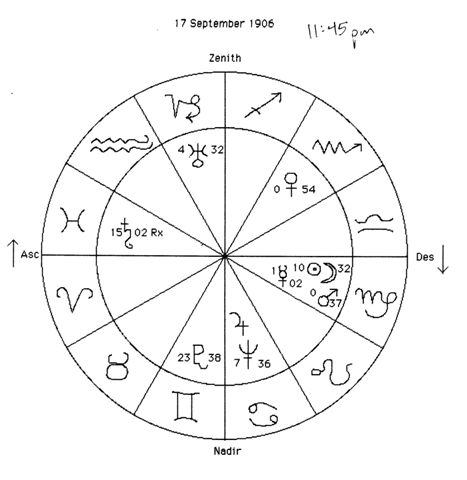
Academic papers
- "The Soul in Homer and Vergil" - TAPA, 61 (1930)
- "Homeric Ideas of the Soul" - Transactions and Proceedings of the American Philogical Association 1930-31 (1932)
- "Peculiar Granules in the Cells of the Liver and Adrenal in Infections" - Johns Hopkins Hospital Bulletin (1936)
- "The Treatment of Schizophrenia" (1938)
- "New Clothes" (on education) - HIKA Literary Magazine. February (1939)
- "A Note on Latin Poetry" - HIKA Literary Magazine. 27 (1941)
- "Basic, Latin, and Other Languages" - The Kenyon Review, 5 (1943)
Plays
- The Woman From Detroit (1941)
- The Devil's Wager (1979) Exposition Press
Poetry
- Translation of Goethe: Mignorij - HIKA Literary Magazine (1947)
- Eight Poems - HIKA Literary Magazine. 27 (1941)
- Sawdust and Tomatoes (1944) Times Printing Company
Newspaper column
- "The Country Doctor" - Berwick Enterprise (1969 - 1973)
Book reviews
- Horace et la société romaine du temps d'Auguste - The Classical Weekly, 32 (1939)
- La medicina in Plauto - The Classical Weekly, 32 (1939)
- Physiologus Latinus. Éditions préliminaires, versio B - The Classical Weekly, 33 (1939)
- Einsicht und Leidenschaft. Das Wesen des platonischen Denkens - The Classical Weekly, 34 (1940)
- Physiologus Latinus Versio Y - The Classical Weekly, 35 (1941)
- Medical Latin and Greek - The Classical Weekly, 35 (1942)
- The Latin Key to Better English - The Classical Weekly, 36 (1943)
